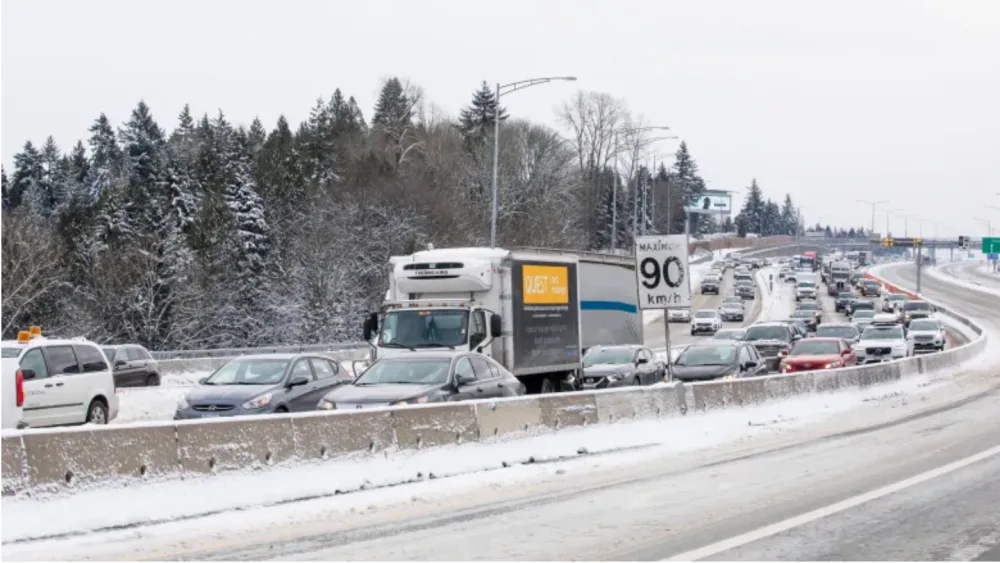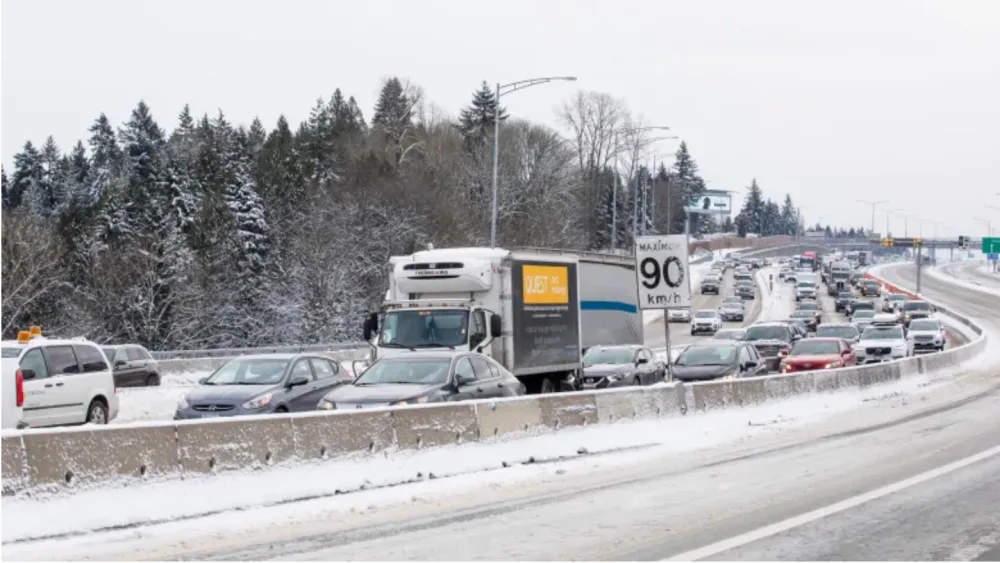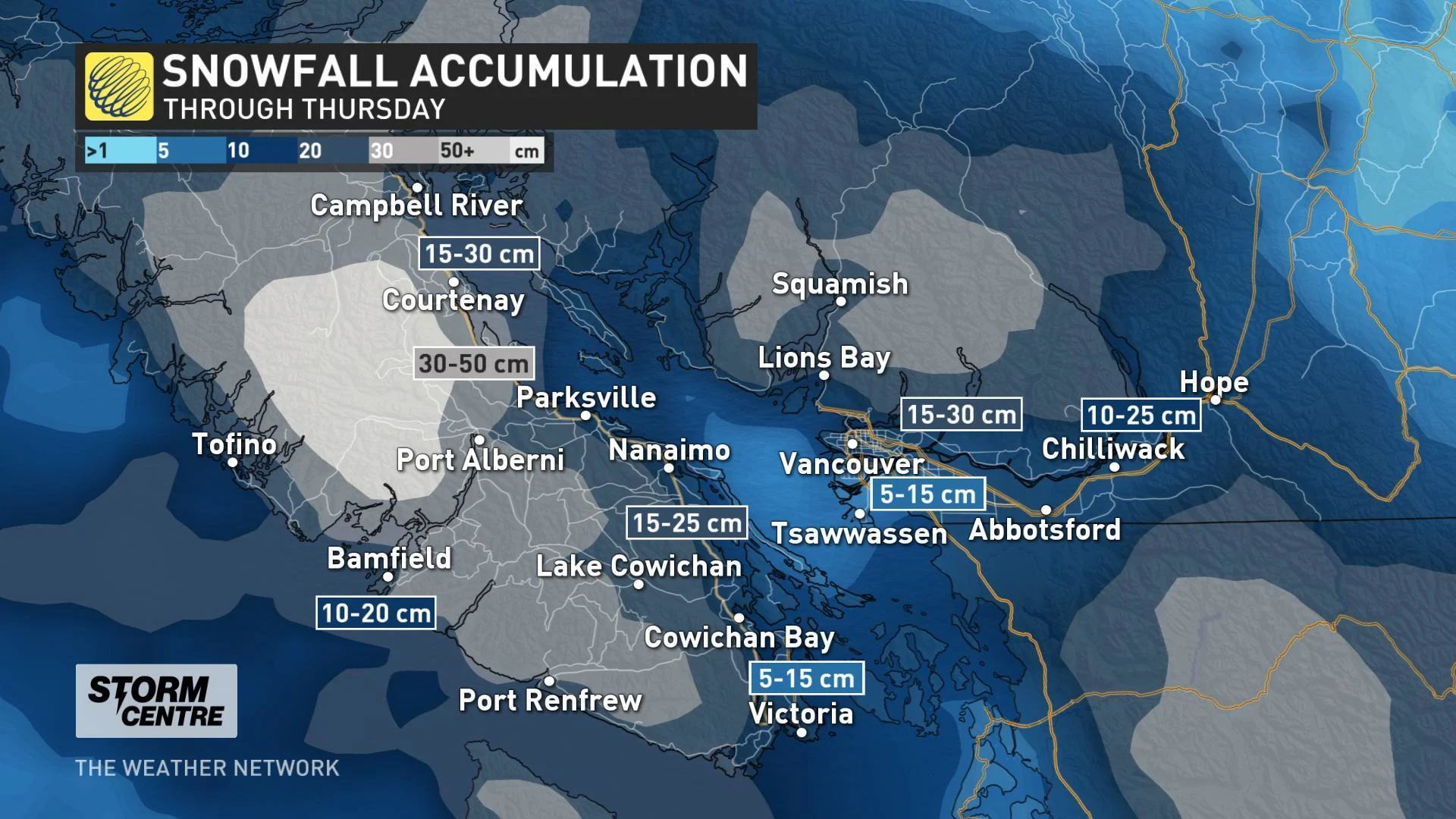
Why parts of Hwy 1 have become a 'sheet of black ice'
Highway 1 between Chilliwack and Abbotsford, B.C., is being described as treacherous by drivers, with a series of accidents affecting both east and west lanes, as the ministry of transportation struggles in "challenging" conditions to keep the route clear.
Ice is making the freeway through the Fraser Valley "dangerous" according to drivers.
The conditions have caused several stalls, spin-offs and fender-benders since Monday, some of which have led to gridlock on the major route through the Lower Mainland.
Traffic officials are urging people to slow down and say they should expect delays.
Evan Shindle, who runs Arctic Snow Removal, a Burnaby-based snow removal and salting company for businesses across the Lower Mainland, said his employees — including some experienced drivers from Saskatchewan — refused to take the freeway Tuesday, even in their four-by-four work vehicles.
"It's a sheet of black ice," he said.

Photo: Snow clearing on certain highways in Metro Vancouver, including Highway 1, are the jurisdiction of the B.C. government, but the rest are the responsibility of cities. (Ben Nelms/CBC)
"I had two trucks turn around on Highway 1 and refuse to drive," said Shindle, who has been in the business for decades. "I had another truck that did make it and he said it was the most scary thing he's done in a long time."
WHY IS THE HIGHWAY NOT BEING CLEARED?
Snow clearing on certain highways in Metro Vancouver, including Highway 1, are the jurisdiction of the B.C. government.
The ministry of transportation says contractors have been working overnight to try to melt the ice on the roadway.
But temperatures dipping below –15 C and strong winds have made it difficult to get road treatments to melt or add friction to the ice to make it safer to drive over, South Coast regional director Ashok Bhatti said.
The high winds have blown some of the salts and sand off the highway, he said.
"We are using calcium chloride and a combination of techniques, but it has been challenging," Bhatti said.
"I've had teams from our ministry personally driving those roads ahead of commuter traffic," he said. "We are hitting it with everything we've got."
WHY DOES WET SNOW MAKE MATTERS WORSE?
Bhatti says the West Coast gets very wet snow, which is even more difficult to drive over.
He said the snow hits the colder road surface and refreezes.
He described how that creates unique problems like compaction or "ice shelving," making the snow more difficult to plow away.
"Once those conditions start to persist, it is more difficult to try to address that," he said.

WHAT CAN DRIVERS DO?
Bhatti urges drivers to slow down and take care.
He said accidents that need attention and clean-up have slowed the application of road treatment and blocked road-clearing vehicles from doing much-needed work.
So, every mishap makes the road a little more dangerous.
This article, written by Yvette Brend, was originally published for CBC News.





